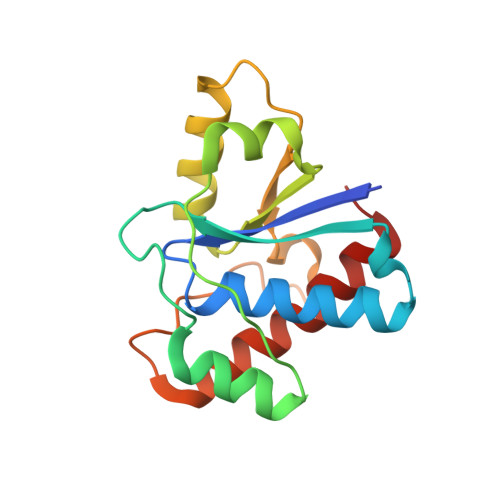Computational and structure-guided design of phosphoinositide substrate specificity into the tyrosine specific LMW-PTP enzyme.
Egbe, E., Levy, C.W., Tabernero, L.(2020) PLoS One 15: e0235133-e0235133
- PubMed: 32584877
- DOI: https://doi.org/10.1371/journal.pone.0235133
- Primary Citation of Related Structures:
6Y2V, 6Y2W - PubMed Abstract:
We have used a combination of computational and structure-based redesign of the low molecular weight protein tyrosine phosphatase, LMW-PTP, to create new activity towards phosphoinositide substrates for which the wild-type enzyme had little or no activity. The redesigned enzymes retain catalytic activity despite residue alterations in the active site, and kinetic experiments confirmed specificity for up to four phosphoinositide substrates. Changes in the shape and overall volume of the active site where critical to facilitate access of the new substrates for catalysis. The kinetics data suggest that both the position and the combination of amino acid mutations are important for specificity towards the phosphoinositide substrates. The introduction of basic residues proved essential to establish new interactions with the multiple phosphate groups in the inositol head, thus promoting catalytically productive complexes. The crystallographic structures of the top-ranking designs confirmed the computational predictions and showed that residue substitutions do not alter the overall folding of the phosphatase or the conformation of the active site P-loop. The engineered LMW-PTP mutants with new activities can be useful reagents in investigating cell signalling pathways and offer the potential for therapeutic applications.
Organizational Affiliation:
School of Biological Sciences, Faculty of Biology Medicine and Health, University of Manchester, Manchester Academic Health Science Centre, Manchester, England, United Kingdom.
















